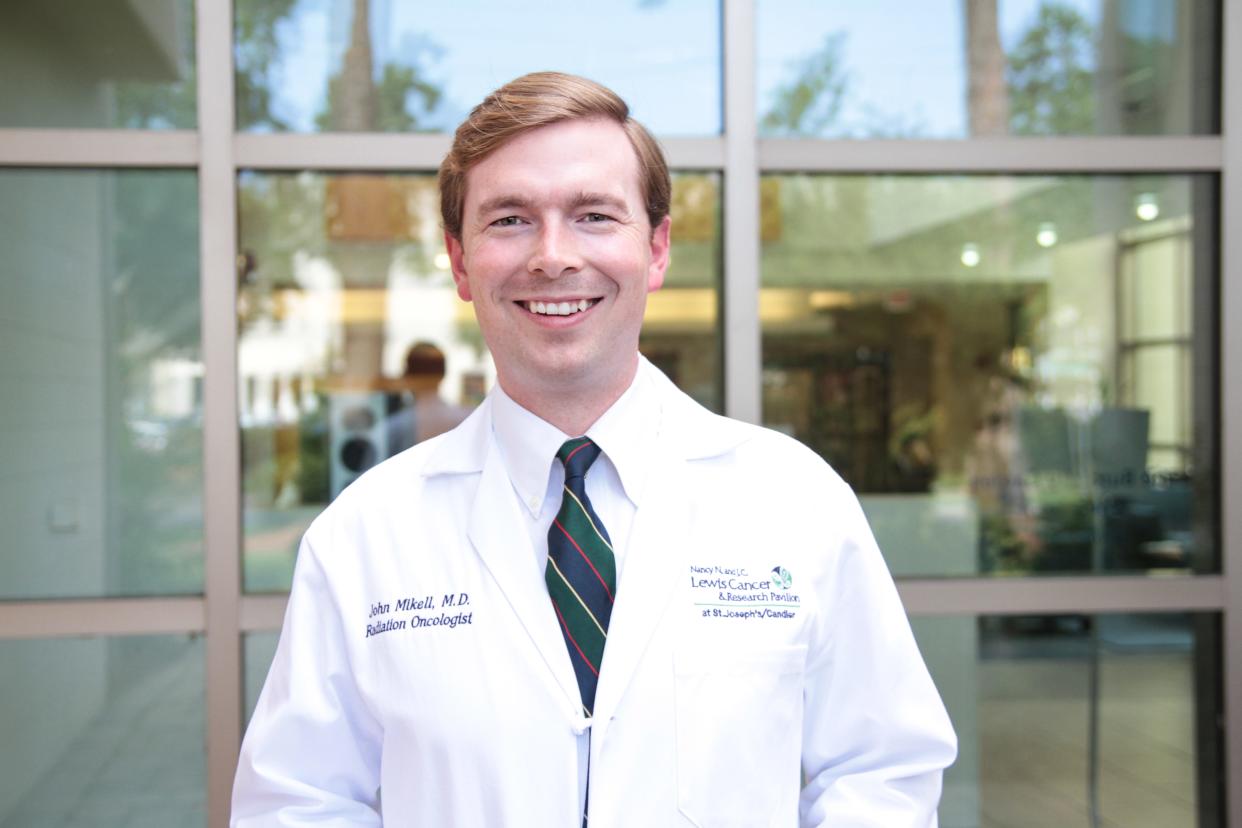Oncologist: Advanced options, personalized treatments are available for breast cancer

This is a commentary by Dr. John Mikell, a radiation oncologist at Nancy N. and J.C. Lewis Cancer & Research Pavilion
As we work to increase community awareness of breast cancer through our PAINT THE TOWN PINK CAMPAIGN this month, it is important to remember that early detection through mammography continues to be the best means of surveillance. While this detection method has improved significantly over the last few decades, treatment options for those diagnosed with breast cancer have thankfully also continued toimprove.
With radiation oncology, the trend over the last several years has been for simpler, easier, shorter treatments, with care more personalized. Physicians spend quite a bit of energy determining the best treatment for individual patients, as numerous appropriate options may exist. Such advancements are based on the philosophy of directing radiation to where it is supposed to go, keeping it away from where it is not supposed to go, and determining the optimal intensity level and delivery schedule for each patient.
More: Breast cancer survivor Joyce Chow thanks God, doctors and nurses for helping her through it
Radiation is often used after surgery in breast cancer to reduce the likelihood of recurrence. Radiation works by killing cancer cells. The treatments have traditionally been delivered daily over several weeks, but new treatment options have been introduced which can make the treatment time shorter, more convenient, and less stressful on the patient.
Historically, the treatment for breast cancer has been to the whole breast. For some patients, this is still appropriate, but for some early stage cancer patients, partial breast radiation may be appropriate. With this approach, just the area immediately surrounding where the cancer was is treated. This is often done in just five days. For appropriate patients, this treatment produces the same beneficial results, while typically resulting in significantly fewer side effects than whole breast protocols.
Savannah oncologist: Advancements are making breast cancer treatment more personalized
Whole breast treatment is typically done over the course of three to four weeks, while the partial breast treatment is completed usually over the course of just one week.
Comparatively speaking, partial breast treatment tends to provide less irritation to the skin, much less fatigue, and in general, an easier overall treatment for the patient.
For patients who still require whole breast treatment, there are new additional technologies available that help mitigate possible risk to nearby tissues. With any radiation treatment, the idea is to pinpoint the radiation to the targeted area, and minimize exposure to normal healthy tissues.
With left-sided cancers breast cancers, we use a technology called deep inspiration breath-hold treatment, which allows us to protect patient’s hearts during radiation treatment. With this technique, advanced radiation machines monitor the patient’s breathing and will only deliver radiation when the patient takes a breath in and holds it at a certain level. When the patient breathes out, the beam cuts off. This allows the machine to only deliver radiation to the breast when it is lifted away from the heart, thereby steeply reducing long-term risk to this critical organ.
For right-sided breast cancers, we can limit the exposure to patients’ lungs by treating them on their stomach. This technique involves a positioning device that allows the breast to hang through a gap in the table, away from the body. This gives us better angles to treat the breast and minimize the amount of lung in the path of the radiation beams. This technique has also been shown to reduce skin irritation in women with larger breasts.
The length of whole breast treatment regimens continues to evolve. For example, current national guidelines typically suggest a three- to four-week schedule for whole breast treatment. Just a few years ago, the standard schedule was five to six weeks. Recently published data have now shown that some patients may safely be treated over just five days, similar to patients receiving partial breast radiation. While this may not yet be best for everyone, this well illustrates the trend toward shorter, more convenient treatments.
Beyond advancements in precision radiation and treatment options, the Lewis Cancer & Research Pavilion continues to focus on personalized care for each patient. For example, patients who present with a certain pre-cancerous condition of the breast called ductal carcinoma in situ (DCIS) may now benefit from improved testing to help determine if they need radiation after surgery or not.
These tests can provide a more individualized assessment of the risk of recurrence after surgery, allowing us to tailor our treatment recommendations more precisely. While we are always conscious to make sure we are doing all that is necessary for the patient, we also want to ensure we are doing no more than is needed. These new and improved tools help us build more personalized treatment plans, leading to improved outcomes.
While tireless research has brought continued advancements in radiation oncology with more personalized, convenient treatment options, cancer outcomes remain the best when disease is caught early. Please be sure to schedule your annual mammogram by calling 912-819-PINK.
This article originally appeared on Savannah Morning News: Personalized medicine, advanced options exist for breast cancer care

